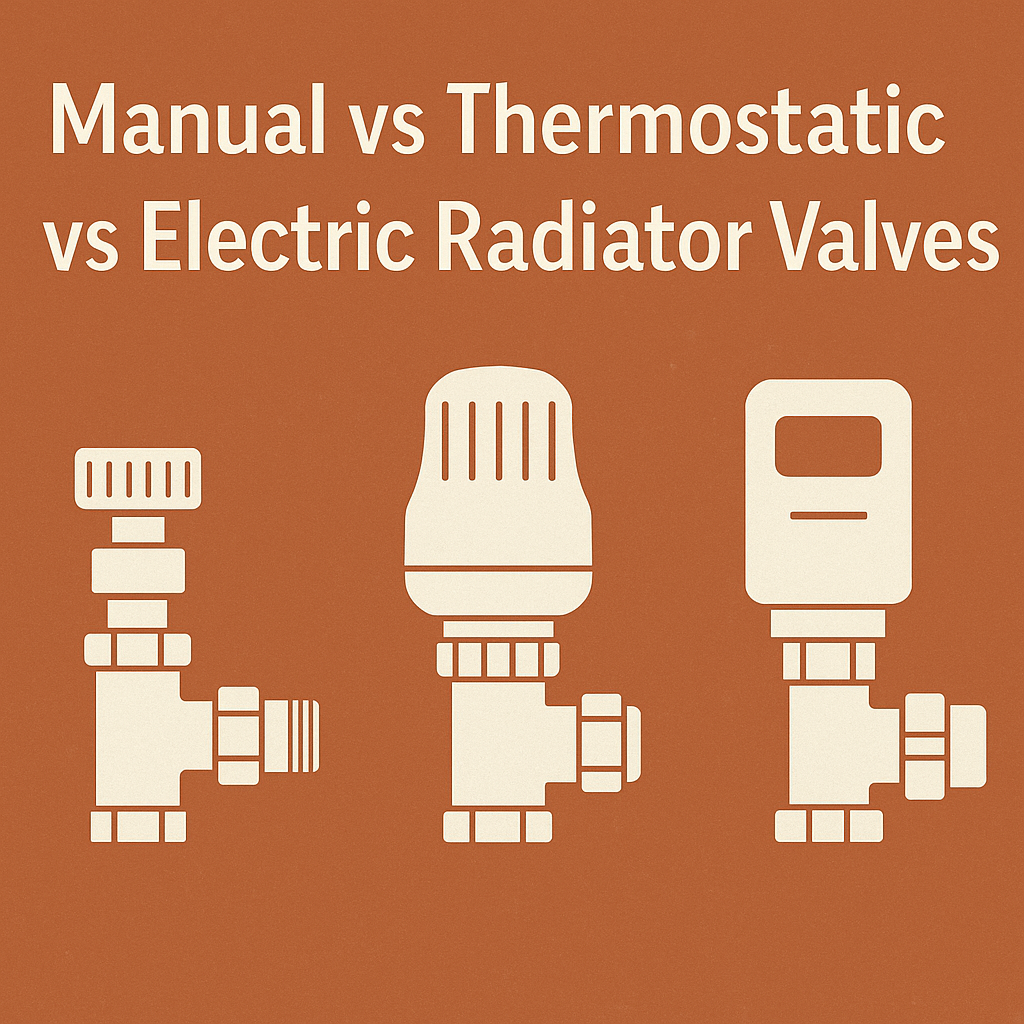When choosing new radiators — especially cast iron ones — the style and finish are only part of the decision. Just as important is how you control the heat. That’s where radiator valves come in.
There are three main types: manual valves, thermostatic radiator valves (TRVs), and electric radiator valves. Each offers different levels of control, efficiency, and convenience. But which is right for your home?
Let’s explore the pros and cons of each.
Manual Radiator Valves
What are they?
Manual radiator valves are the most traditional option. You turn the valve by hand to control how much hot water flows into the radiator. The more you open it, the warmer the radiator gets.
Pros:
-
Simple and easy to use
-
Low cost and widely available
-
Great for rooms with consistent use or fixed temperature needs
-
Timeless, especially in period homes
Cons:
-
No automatic temperature regulation
-
Can be left on too high, wasting energy
-
Requires regular adjustment in changing weather
Best for:
Those who want a traditional look and don’t mind manually adjusting heat.
Thermostatic Radiator Valves (TRVs)
What are they?
TRVs automatically regulate the flow of hot water based on the temperature you set. Once the room reaches the desired warmth, the valve reduces or stops the flow to maintain it.
Pros:
-
Saves energy by preventing overheating
-
Offers room-by-room temperature control
-
Easy to adjust with a numbered dial
-
Helps reduce heating bills over time
Cons:
-
Slightly more expensive than manual valves
-
Not suitable for every type of system (e.g., avoid installing TRVs in the same room as your main thermostat)
-
May not pair well visually with traditional radiators — though we offer period-style TRVs to solve this
Best for:
Energy-conscious households or those wanting more efficient heating control without switching to smart systems.
Electric Radiator Valves
What are they?
Electric radiator valves (often used with electric heating elements) are typically controlled via a remote, smartphone app, or wall unit. Some come with built-in thermostats and timers.
Pros:
-
Ideal for homes without central heating
-
Excellent control and flexibility — including remote scheduling
-
WiFi-enabled options available
-
Great for conversions, bathrooms, or outbuildings
Cons:
-
More expensive upfront
-
Requires an electrical connection
-
A more modern look (though some models blend well with cast iron radiators)
Best for:
Off-grid rooms, bathrooms, or homes using electric-only heating solutions.
So, Which Should You Choose?
| Valve Type | Control Level | Energy Saving | Best For |
|---|---|---|---|
| Manual | Low | Basic | Traditional styling and simplicity |
| TRVs | Medium | High | Efficient, room-specific control |
| Electric | High | Very High | Smart scheduling, electric-only setups |
Ultimately, the best radiator valve for your home depends on:
-
Your heating system type
-
How much control you want over each room
-
Your budget
-
The aesthetic you're aiming for
Need Help Choosing?
We stock a wide range of manual, thermostatic, and electric radiator valves — including period-style designs to match your cast iron radiators perfectly.
📞 Call us on 01723 321 333
📧 Email: info@periodstyle.co.uk
Our expert team will be happy to advise on the best solution for your space and heating setup.




